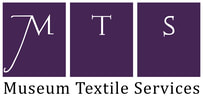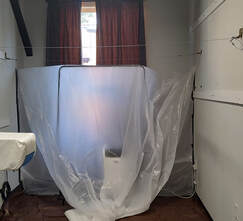Our Test Results
|
Museum Textile Services has a 97.4% rate of eliminating live spores on artifacts (1). But killing the spores is just the first part of the process. Dead and inactive spores still contribute to an unhealthy environment and must be removed to avoid illness and lower the likelihood of a re-bloom. This can be extremely difficult on clothing, textiles, carpets and upholstery, due to the porous nature of fibers and the way we use our clothing and soft furnishings.
Despite these challenges, we can safely remove spores, pollen, and dust from artifacts using a high-efficiency filtered vacuum with variable suction, with micro-attachments to reach tight areas2. When used in combination with proper storage, temperature and relative humidity mitigation, and routine inspection, our fumigation and surface cleaning can prevent damage to artifacts and prevent the rapid spread of fungal activity. (1) A total of 144 tests took place at Museum Textile Services on 11/1/2022 and 1/26/2023 by PowerBees, a licensed and insured company headquartered in Wayland, Massachusetts. Tests were performed with lift tapes and analyzed using light microscopy, which identifies what type of spores are present and in what concentrations. A total of 5 tests were found to contain hyphal fragments on less than 5% of surface area tested after fumigation, indicating the potential of active mold.
(2) Of the 105 artifacts tested after being fumigated and surface cleaned twice, 93% had no detectable spores. Of the artifacts found with inactive spores remaining after surface cleaning, 98.6% tested “very low”, indicating the spores detected on less than 5% of the test area. |
The Museum Textile Services fumigation facility is located in Amesbury, Massachusetts. We can fumigate spaces as small as 2.5 cubic feet and as large as 500 square feet.
|


